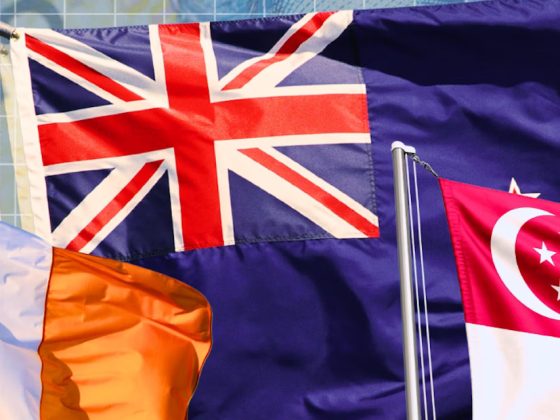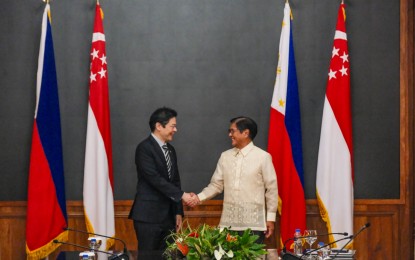Modern power grids are the literal backbone of human civilization. Our power consumption keeps growing every year as cities expand, and we develop new technologies that require power.
Delivering the power from the power station to the end-user is done through the use of power lines. These rarely noticed pieces of critical infrastructure represent a microcosm of interesting engineering solutions and design features of their own. Here’s all you need to know about power lines in one place!
What Are Power Lines?
Power lines are something everyone’s familiar with. You’ll see them on your street if you live in a rural area, but you’ll also see them in the middle of a field out in the country. Power lines are a part of the national power distribution network and are an essential piece of power infrastructure.
The way power lines work is interesting. Power is produced in power plants of different types. Some use coal, others run on turbines propelled by water, while some use nuclear energy to produce electricity. Moving that electricity from the power plant to homes across the country requires more than just a direct connection between the two.
As it turns out, the power produced by the power plant lacks the necessary voltage to reach distant places across the power grid. Because of that, it is pushed through a transmission substation where a transformer bumps the voltage high enough, so it can get where it needs to go.
What does this have to do with power lines? Not all power lines are the same. There are different types of power lines designed to transfer power at different stages of the power distribution grid.
Different Types of Power Lines
The T post on your street corner is a power line, but so is a massive power transmission tower sitting in the middle of the field between your town and the next town over. Yet, these two structures are very different. Power lines differ depending on the amount of voltage they’re pushing through the wire.
The massive power transmission towers are high voltage systems. They’re like a superhighway of power with high-speed limits. Once you get off that highway, you have to slow the power down, which is done through various power substations whose main job is to reduce the voltage to a level suitable for local distribution. That local distribution network is made up of low voltage power lines.
Are Power Lines Reliable?
Reliability is a massive thing in power distribution. While most power lines are reliable, many operators use transmission switches from Southern States to ensure their grid’s uptime. A transmission switch is a device that allows the grid operator to remotely isolate a certain part of the grid.
Say that a thunderstorm passes through your county, knocking down trees and blowing roofs off houses. If any of that debris knocks down a power line, there will be massive outages in communities on the other end of those lines. Without transmission switches, the power company would have to manually re-route power from the damaged infrastructure, which can take hours or even days. With transmission switches, this job can be done remotely within minutes.
Barring physical damage, power lines are fairly reliable. With proper maintenance, they can last for decades without suffering any major issues.
How Safe are Power Lines?

The safety of power lines has always been a matter of hot debate. While some people questioned the safety of local, low voltage power distribution, most were and still are concerned by the effects of ultra-high voltage power transmission lines.
What’s the cause of all this controversy? Modern high voltage lines are inherently unsafe in the sense that the power running through them is extremely dangerous by default. Because of this, there was no point in insulating the lines, as that would only make power distribution less efficient.
Uninsulated power lines pushing extremely high voltage power have to be isolated from human contact. That’s why all high voltage transmission lines are up high and in the middle of nowhere for the most part. Yet, there will always be a community that is living near where transmission lines enter a city or town. While being high enough off the ground means that most people won’t touch the lines, the amount of voltage being pushed through this type of infrastructure is enough to create a substantial electromagnetic field around the power line.
Even though there’s no concrete evidence that these electromagnetic fields are a health risk for anyone living in the vicinity of transmission power lines, people are still concerned, and understandably so. Research is being done into the effects of prolonged exposure to electromagnetic fields and how said exposure affects our bodies. That being said, until we figure out how to power cities using hurricanes (yes, that’s a real concept), we’ll have to live with high voltage and voltage power lines.
Underground Power Lines
If you thought that power is being transmitted only through overhead lines, you’d be mistaken. Underground power distribution networks are inherently safer, as there’s a bunch of soil between them and you. However, they pose a risk of their own, especially if you’re a DIY type who has a massive front/backyard and a knack for summer projects.
Digging through underground power lines is a very real risk that many homeowners face every year. Because of that, it’s highly recommended that you consult with your local energy provider to see whether there are any shallow power lines on your property. This information is often readily available, so it’s not too difficult to obtain. On the other hand, it could save your life should you decide to dig on your own land.
The Future of Power Lines
As far as technology has evolved since the world has first started using electricity on a larger scale, power lines have remained more or less the same for a long time. There’s a good chance that this technology won’t change anytime soon, either. We are yet to find more efficient means of transferring power from power plants to the end-user. Maybe one day each home will have a mini power plant of its own, thus rendering massive power distribution networks obsolete.










